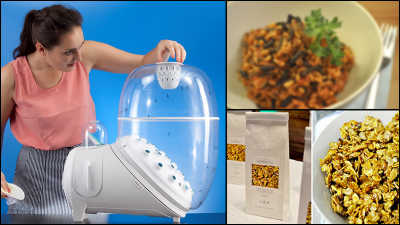Newly discovered 'Styrofoam-eating mealworms' in Africa could help combat plastic pollution

As plastic pollution becomes a global problem, attention is being paid to microorganisms and insects that have the ability to digest and decompose plastic. A research team at
Mitogenomic profiling and gut microbial analysis of the newly identified polystyrene-consuming lesser mealworm in Kenya | Scientific Reports
https://www.nature.com/articles/s41598-024-72201-9

Can the mealworm be the answer to Africa's plastic waste problem? | icipe - International Center of Insect Physiology and Ecology
https://www.icipe.org/news/can-mealworm-be-answer-africa%E2%80%99s-plastic-waste-problem
Plastic-eating insect discovered in Kenya
https://theconversation.com/plastic-eating-insect-discovered-in-kenya-242787
Plastic-eating mealworms native to Africa discovered | Live Science
https://www.livescience.com/animals/insects/plastic-eating-mealworms-native-to-africa-discovered
The world produces 460 million tons of plastic annually, but only 14-18% of the total is recycled, posing risks to the environment and human health. Although Africa produces only 5% of the world's plastic, it is a region where plastic pollution is serious due to a lack of recycling systems.
So the ICIPE team studied the ability of African lesser mealworms to break down a major type of plastic, polystyrene , commonly known as Styrofoam and widely used in food and electronics packaging.
The adult lesser mealworm, the mealworm moth, is native to Africa, but at the time of writing, it is found almost everywhere in the world and is known as a pest that inhabits flour and grain storage facilities, poultry farms, etc. Previous research has shown that several mealworms have the ability to decompose plastic, but there was a lack of detailed information, especially about mealworms that live in Africa.
So the research team conducted an experiment to see if the lesser mealworms have the ability to digest and decompose polystyrene. Click on the image below to remove the mosaic and see a picture of the lesser mealworm eating plastic.
The research team divided the lesser mealworms into three groups: one group fed only polystyrene, one group fed a combination of polystyrene and nutritious
The results showed that the group fed the combination of polystyrene and bran had a higher survival rate than the group fed only polystyrene, and that the combination of polystyrene with bran also digested polystyrene more efficiently than the group fed only polystyrene.
'A diet of polystyrene alone supported the mealworms' survival, but it did not provide enough nutrition to efficiently break down polystyrene,' said Fathiya Khamis of ICIPE, co-author of the paper. 'This finding highlights the importance of a balanced diet for insects to optimally consume and degrade plastic.'
Click on the images below to remove the mosaic and see 'Photo of the lesser mealworms fed polystyrene and bran (C)' and 'Photo of the lesser mealworms fed only polystyrene (D).'

The photo on the left (A) shows the polystyrene before the experiment, and the photo on the right (B) shows the polystyrene after 30 days of the experiment. You can see that the lesser mealworms are indeed eating the polystyrene.

The team also found that the gut of polystyrene-fed mealworms was rich in bacteria from the genera Cluyberra , Lactococcus , and Klebsiella , which produce enzymes that digest plastic, as well as Proteobacteria and Firmicutes, which break down a variety of materials.
'The abundance of the bacteria indicates that it plays an important role in decomposing plastic,' said Khamis. 'Maybe the lesser mealworms don't have the natural ability to eat plastic. Instead, as they start eating plastic, their gut bacteria may change to break down the plastic.'
Future research could focus on isolating and identifying the specific bacterial strains involved in polystyrene degradation and analyzing the enzymes they produce, which could allow mealworm-derived bacteria and enzymes to be used to treat plastic waste.
Related Posts:








